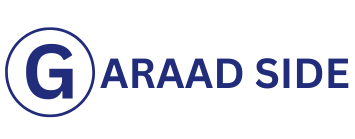Introduction: The Evolution of EdTech Tools
In the last decade, educational technology (EdTech) has shifted from optional to essential. In 2025, EdTech Tools are at the heart of how schools, universities, and training organizations deliver instruction. From learning management systems (LMS) to AI-powered tutors and gamified apps, technology now drives engagement, assessment, and personalization in classrooms around the world.
This article explores what EdTech Tools are, why they matter, their benefits, key examples, and how educators and students can harness them effectively.
Section 1: What Are EdTech Tools?
EdTech Tools are digital platforms, applications, and software designed to support teaching and learning. They encompass a wide variety of functions, from content delivery to data analytics.
Core Categories of EdTech Tools:
- Learning Management Systems (LMS): Platforms for organizing courses, assignments, and grading.
- Collaboration Tools: Apps for group work, communication, and file sharing.
- Assessment Tools: Online quizzes, tests, and feedback systems.
- AI Tutors and Chatbots: Virtual assistants available 24/7.
- Gamified Learning Apps: Make learning fun and interactive.
- Analytics Tools: Track student progress and performance.
Section 2: Why EdTech Tools Matter in 2025
- Hybrid and Remote Learning:
More students learn online or in hybrid settings, requiring robust digital tools. - Personalized Learning:
EdTech Tools adapt to each learner’s pace and style. - Teacher Efficiency:
Automating grading, attendance, and resource distribution frees up teacher time. - Data-Driven Insights:
Teachers and administrators use data to improve instruction. - Global Accessibility:
EdTech Tools break geographical barriers, enabling cross-border learning.
Section 3: Benefits of EdTech Tools
1. Enhanced Engagement
Interactive apps, videos, and gamification keep students motivated.
2. Improved Communication
Platforms allow seamless teacher-student-parent interaction.
3. Flexible Learning
Access from anywhere at any time suits diverse schedules.
4. Real-Time Feedback
Immediate performance insights help students improve quickly.
5. Cost Savings
Digital resources often cost less than traditional materials.
Section 4: Essential EdTech Tools for 2025
Learning Management Systems (LMS):
- Google Classroom: Integrates with Google Docs and Drive for seamless course management.
- Moodle: Open-source LMS used globally.
- Canvas: Popular among higher education institutions.
Video Conferencing and Collaboration:
- Zoom Education: High-quality video classes and breakout rooms.
- Microsoft Teams for Education: Built-in chat, assignments, and calendars.
- Slack: For student projects and staff communication.
Assessment and Feedback:
- Kahoot!: Gamified quizzes.
- Quizizz: Interactive assessments with real-time analytics.
- EdPuzzle: Add questions and notes to videos for active learning.
AI and Adaptive Learning:
- DreamBox: Adaptive math learning platform.
- Smart Sparrow: Personalized learning experiences.
- Socratic by Google: AI homework help and explanations.
Content Creation and Sharing:
- Canva for Education: Design presentations and infographics.
- Nearpod: Interactive lessons and VR field trips.
- Flip (formerly Flipgrid): Video discussion boards.
Section 5: How EdTech Tools Empower Teachers
- Lesson Planning: Create multimedia-rich lesson plans.
- Automated Grading: Save time on repetitive tasks.
- Student Engagement: Polls, quizzes, and live chat keep attention.
- Professional Development: Access online training and webinars.
Section 6: How EdTech Tools Empower Students
- Self-Paced Learning: Students can progress according to their own schedule.
- Accessibility Features: Closed captions, screen readers, and translation tools.
- Collaboration Skills: Group projects in virtual workspaces.
- 21st Century Skills: Familiarity with tools used in the workplace.
Section 7: Integrating EdTech Tools into Schools
- Infrastructure: Reliable internet, devices, and tech support.
- Training: Teachers need ongoing support to use tools effectively.
- Policies: Data privacy, acceptable use, and security protocols.
- Feedback Loops: Regularly collect input from students and staff.
Section 8: Challenges and Considerations
- Digital Divide: Not all students have equal access to devices or internet.
- Data Privacy: Safeguarding student information is crucial.
- Over-Reliance on Technology: Balance screen time with offline activities.
- Quality Control: Vetting tools for accuracy and educational value.
Section 9: Future Trends in EdTech Tools Beyond 2025
- AI-Powered Personalization: Hyper-customized learning paths.
- Immersive Learning with AR/VR: Virtual labs, field trips, and simulations.
- Blockchain Credentials: Secure, verifiable certifications.
- Gamified Assessments: Motivation-driven testing environments.
- Open Educational Resources (OER): Free high-quality content globally.
Section 10: How to Choose the Right EdTech Tools
- Define Goals: Align tools with learning objectives.
- Evaluate Usability: Easy for teachers and students to adopt.
- Check Compatibility: Integrates with existing systems.
- Assess Data Security: Ensure compliance with privacy regulations.
- Start Small: Pilot new tools before full-scale rollout.
Conclusion: Building the Future of Education with EdTech Tools
EdTech Tools are transforming education in 2025 by making learning more interactive, accessible, and personalized. They empower teachers to deliver better lessons, students to learn at their own pace, and administrators to make data-driven decisions.
As technology evolves, the role of EdTech Tools will continue to grow. By embracing them responsibly, schools and individuals can prepare for a future where digital and human learning go hand in hand.

